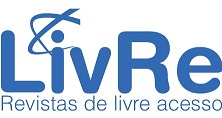TERERÉ AND THE CONSTITUTION OF INMATERIAL CULTURAL HERITAGE ON THE BORDER OF BRAZIL AND PARAGUAY
DOI:
https://doi.org/10.70860/rtg.v13i30.18631Keywords:
Culture, Cultural heritage, Book of Knowledge, Erva-mate, Mato Grosso do SulAbstract
The present study aims to analyze and understand the socio-spatial and affective relationships associated with the consumption and practice of Tereré in the border area of Ponta Porã (Mato Grosso do Sul, Brazil) and Pedro Juan Caballero (Paraguay). To achieve this objective, the investigation process encompassed a review of the literature related to the themes underlying this study. Subsequently, documentary research was conducted using primary and secondary sources, as well as a bibliographic survey, to deepen the understanding of the cultural, identity, and affective relationships that permeate the practice of Tereré. Following this, semi-structured interviews were conducted with 13 individuals via an online form using Google Forms. Within this investigative scope, the significant importance of Tereré emerged as an expressive intangible cultural heritage of the state of Mato Grosso do Sul, particularly in its border context between the cities of Ponta Porã and Pedro Juan Caballero (Paraguay). In this context, Tereré stands as a cultural tradition that plays an essential role in strengthening identity, a sense of belonging, and social relations among the inhabitants of the aforementioned cities. Therefore, it is imperative to recognize and value this practice to ensure the preservation of this valuable intangible heritage, endowed with both regional and transnational character.
References
AMAMBAY. Departamento de Amambay. Pedro Juan Caballero. Disponível em: < https://amambay.gov.py/pedro-juan-caballero/>.
ARAÚJO, F. R. Dicas de prevenção de Covid-19 para pecuaristas de corte. Brasília: EMBRAPA, 2020.
BALDIN, N.; MUNHOZ, E. M. B. Snowball (bola de neve): uma técnica metodológica para pesquisa em educação ambiental comunitária. X Congresso Nacional de Educa – EDUCERE, I Seminário Internacional de Representações Sociais, Subjetividade e Educação – SIRSSE, Curitiba, pp. 329-341, 2011.
CAVANHA, J.; GONÇALVES, D. F. Tereré Turístico. Anais do Encontro de Ensino, Pesquisa e Extensão – Pesquisa e Tecnologia: ações para um futuro sustentável, 13º ENEPEX UFGD, 10º EPEX UEMS, 2019. Disponível em: <https://anaisonline.uems.br/index.php/semex/article/view/6881>. Acesso em: 30 out. 2021.
CROZETTA, R. A. Erva-Mate (tereré): utilização e correlação com a infecção do coronavírus 2019. Monografia (Bacharelado em Farmácia) – Faculdade de Educação e Meio Ambiente, FAEMA, Ariquemes, 2020.
FUNDAÇÃO DE CULTURA DE MS. Proposta de registro do tereré como patrimônio cultural imaterial de mato Grosso do Sul. Estado de Mato Grosso do Sul, 2010.
GASPAR, E. B.; DOMINGUES, R.; BARBOSA, R. S. Recomendações para prevenção da COVID-19 no meio rural na região Sul do Brasil. Embrapa Pecuária Sul - Comunicado Técnico (INFOTECA-E), 2020.
GRANVILLE, B. Ô! tereré. 2013Disponível: <http://www.bonitoms.com/cultura.php?id=1&id2=2>. Acesso em: 25 out. 2021.
IBGE. Instituto Brasileiro de geografia e estatísticas. 2022. Disponível em: <https://cidades.ibge.gov.br/brasil/ms/ponta-pora/historico >. Acesso em: 24 out. 2023.
IPHAN. Convenção para a salvaguarda do patrimônio cultural imaterial. Paris, 2003. Disponível em: <https://ich.unesco.org/doc/src/00009-PT-Brazil-PDF.pdf>. Acesso em: 21 de abril de 2020.
IPHAN. Patrimônio Imaterial. 2012. Disponível em: <http://portal.iphan.gov.br/pagina/detalhes/234>. Acesso em: 21 de abril de 2021.
KUMMER, C. I.; MOURA, M. S. G.; ALMEIDA, R. M. de. Erva-Mate. Artigo publicado pela Universidade Regional do Noroeste do Estado do Rio Grande do Sul (UNIJUI), 2005. Disponível em: < http://www.projetos.unijui.edu.br/matematica/modelagem/erva_mate/>.
LEY Nº 4261. Declara o tereré patrimônio cultural e bebida nacional do Paraguai. 2011. Disponível em: <https://paraguaiteete.files.wordpress.com/2013/08/ley-nacional.jpg>. Acesso em: 30 abr. 2021.
MUNIZ, P. D. A produção acadêmica sobre patrimônio indígena nos periódicos eletrônicos brasileiros. Trabalho de Conclusão de Curso (Bacharelado em Turismo) – Curso de Turismo, Universidade Estadual de Mato Grosso do Sul, Dourados, 2021.
NOERNBERG. P. Chimarrão e(m) Canoinhas/SC: tomar, saber, fazer e comunicar. Dissertação (Mestrado em Antropologia Social) – Centro de Filosofia e Ciências Humanas, Universidade Federal de Santa Catarina, Florianópolis, 2012.
ORGANIZAÇÃO MUNDIAL DA SAÚDE. Coronavirus disease (COVID-19). 2021. Disponível em: <https://www.who.int/emergencies/diseases/novel-coronavirus-2019/question-and-answers-hub/q-a-detail/coronavirus-disease-covid-19>. Acesso em: 30 out. 2021.
PENROD, J.; PRESTON, D. B.; CAIN, R; STARKS, M. T. A discussion of chain referral as a method of sampling hard-to-reach populations. Journal of Transcultural Nursing, v. 4, n. 2, pp. 100-107, 2003. DOI: https://doi.org/10.1177/1043659602250614
SIQUEIRA, G. S. A complementaridade comercial nas cidades gêmeas de Ponta Porã (Brasil) e Pedro Juan Caballero (Paraguai). Monografia (Bacharelado em Geografia) – Departamento de Geografia, Universidade Federal da Grande Dourados, Dourados, MS, 2013.
UNESCO. (2020). Prácticas y Saberes tradicionales del tereré en la cultura del pohã ñana, bebida ancestral guaraní en Paraguay. 2020. Disponível em: <https://ich.unesco.org/es/RL/prcticas-y-saberes-tradicionales-del-terer-en-la-cultura-del-poh-ana-bebida-ancestral-guaran-en-paraguay-01603?RL=01603>.
Downloads
Published
How to Cite
Issue
Section
License
Copyright (c) 2024 Tocantinense Journal of Geography

This work is licensed under a Creative Commons Attribution-NonCommercial-NoDerivatives 4.0 International License.
Revista Tocantinense de Geografia does not remunerate any author for the publication of their texts. The contents of the texts published in this journal are the responsibility of the authors.








.png)












